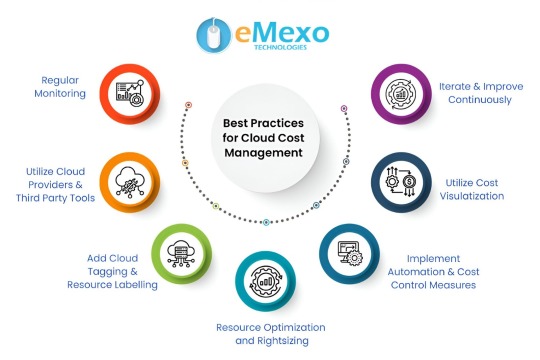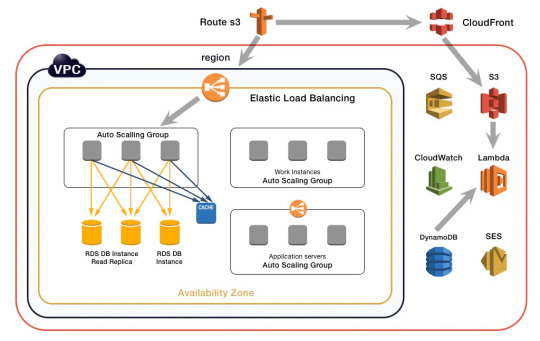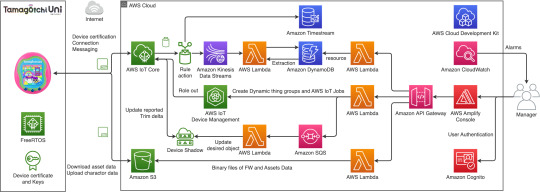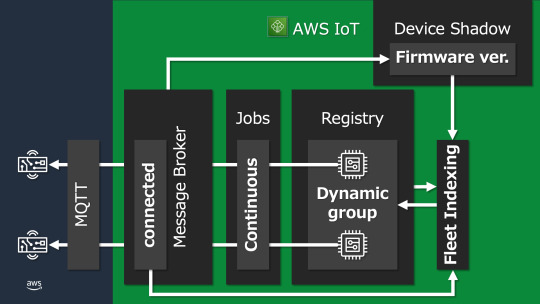#DynamoDB
Explore tagged Tumblr posts
Text

at my work we use a type of storage called DynamoDB, and when you view your table in the console there's this big button that says "Explore table items" you have to click to actually see what's in the table.
And bc of this stupid website, whenever I have to click "Explore table items," I immediately think "Do you think they ever explored each other's table items?"

11 notes
·
View notes
Text
Best AWS Course in Electronic City Bangalore

1. Getting Started with Cloud Computing and AWS Course in Electronic City Bangalore
Cloud computing has revolutionized the way today’s businesses function, and Amazon Web Services (AWS) stands at the forefront of this technological shift, driving innovation and efficiency across industries. As a leading cloud service provider, AWS offers a wide array of services that empower organizations to scale their operations efficiently. With Bangalore emerging as a tech hub, many professionals are keen to harness these powerful tools for career advancement—making an AWS Training in Electronic City Bangalore a valuable stepping stone toward a successful cloud career.
If you’re on the lookout for top-notch AWS Training in Electronic City Bangalore, you're not alone. Many aspiring cloud practitioners are turning to specialized institutes that provide hands-on experience and expert guidance. This blog will delve into what makes eMexo Technologies one of the Best AWS Training in Electronic City Bangalore. Whether you’re new to cloud computing or looking to enhance your skills, there’s something here for everyone ready to take their career to new heights!
2. Explore Key AWS Services in Our AWS Training Program at Electronic City, Bangalore

The AWS Course in Electronic City Bangalore includes an in-depth understanding of core services that form the backbone of cloud computing. These services encompass computing capabilities, data storage options, database administration, and network infrastructure. Each service integrates seamlessly to deliver flexibility and scalability for various business applications.
Hands-on training is vital for mastering these AWS services. At eMexo Technologies, a leading AWS Training Institute in Electronic City Bangalore, students work on real-world projects that reinforce theoretical concepts with practical application.
Learners gain practical experience with Amazon EC2 for computing, S3 for scalable storage, and RDS for managed databases. Real-time labs and use cases provide the skills employers seek in today’s competitive job market.
The AWS ecosystem can be complex, but structured instruction simplifies the journey. With expert trainers by your side, you’ll learn not just how to use AWS—but how to use it well.
3. Master the Art of Creating Scalable Cloud Solutions with Our AWS Certification Training in Electronic City Bangalore.

Designing and deploying scalable architectures is a key focus of the AWS Certification Course in Electronic City Bangalore. These skills are essential for creating cloud systems that can handle changing workloads with ease and efficiency.
AWS offers robust services like Auto Scaling and Elastic Load Balancing, which are covered extensively in the course. These tools enable dynamic resource allocation to maintain performance during traffic spikes—crucial for any growing business.
You’ll also explore microservices architecture and container orchestration using Amazon ECS and EKS, ensuring your deployments are resilient and scalable. Best practices for high availability and fault tolerance using multiple Availability Zones are taught to help you build strong, reliable systems.
4. Cloud Monitoring, Security, and Cost Control – Taught at the Best AWS Training in Electronic City Bangalore

Maintaining performance and cost-efficiency is critical in AWS. In this module, part of the Best AWS Training in Electronic City Bangalore, you’ll explore essential tools like Amazon CloudWatch for monitoring and AWS IAM for secure access control.
Security fundamentals are emphasized, ensuring you understand how to manage access, encrypt data, and comply with industry standards. Gaining expertise in these skills is crucial for anyone aiming to succeed as an AWS professional.
You'll also dive deep into cost optimization techniques—gain hands-on experience with AWS Cost Explorer, and discover how to automate processes that help cut down unnecessary spending. These lessons are especially useful for professionals managing real-world cloud budgets.
At eMexo Technologies, a respected AWS Training Center in Electronic City Bangalore, students gain both the knowledge and the tools to maintain a secure, efficient, and well-managed cloud environment.
5. AWS Training and Placement in Electronic City Bangalore: Exam Prep and Career Guidance

Preparing for certification and finding the right job go hand-in-hand. That’s why the AWS Training and Placement in Electronic City Bangalore at eMexo Technologies includes both technical training and career development support.
You’ll benefit from certification-specific resources including mock exams, study materials, and real-time project experience—all aligned with current AWS exam formats.
In addition to technical prep, we offer career-building services such as resume writing, mock interviews, and job placement assistance. These features make our program one of the most comprehensive options for AWS Certification Course in Electronic City Bangalore.
Graduates of our program walk away not just certified—but confident. Whether you're starting fresh or upskilling for your next promotion, eMexo Technologies is the AWS Training Institute in Electronic City Bangalore that helps you get there.
Final Thoughts: If you're aiming for top-tier AWS training in Electronic City, Bangalore, eMexo Technologies is the smart choice.

The cloud computing industry is evolving rapidly, and AWS skills are in high demand. With eMexo Technologies, you're choosing a trusted AWS Training Center in Electronic City Bangalore that combines expert instruction, practical experience, and career support into one powerful training solution.
Whether you're interested in the AWS Course in Electronic City Bangalore, preparing for certification, or seeking job placement, we’re here to help. Take the first step toward a future-ready career—join our AWS Training and Placement in Electronic City Bangalore today!
📞 Contact: +91 9513216462 / [email protected]
📍 Location: Electronic City, Bangalore
🌐 Learn more and register here!
https://www.emexotechnologies.com/courses/aws-solution-architect-certification-training-course/
#AWS#AWSTraining#AWSCourse#LearnAWS#AWSDeveloper#AWSSkills#AWSDevelopment#EC2#S3#IAM#CloudFormation#Lambda#AWSCLI#AWSConsole#RDS#DynamoDB#DevOps#Terraform#Kubernetes#CloudComputing#CloudTraining#ITTraining#CloudDevelopment#CareerGrowth#AWSTrainingCenterInBangalore#AWSTrainingInElectronicCityBangalore#AWSCourseInElectronicCityBangalore#AWSTrainingInstitutesInElectronicCityBangalore#AWSClassesInElectronicCityBangalore#BestAWSTrainingInElectronicCityBangalore
0 notes
Text
0 notes
Text

Expert Use-Cases & Architecture
#AWSArchitecture#ServerlessDesign#MultiTierArchitecture#CloudFormation#IaCwithAWS#CostOptimizationAWS#DynamoDB#AdvancedCloudSolutions#ExpertAWS#SunshineDigitalServices
0 notes
Text

#QuizTime Which NoSQL DB handles real time data better?
A) Redis 🚀 B) Cassandra 🔷 C) DynamoDB 💡 D) MongoDB 🍃
Comments your answer below👇
💻 Explore insights on the latest in #technology on our Blog Page 👉 https://simplelogic-it.com/blogs/
🚀 Ready for your next career move? Check out our #careers page for exciting opportunities 👉 https://simplelogic-it.com/careers/
#quiztime#testyourknowledge#brainteasers#triviachallenge#thinkfast#quizmaster#nosql#data#realtimedata#redis#cassandra#dynamodb#mongodb#knowledgeIspower#mindgames#funfacts#makeitsimple#simplelogicit#simplelogic#makingitsimple#itservices#itconsulting
0 notes
Text
Prefab Cloud Spanner And PostgreSQL: Flexible And Affordable

Prefab’s Cloud Spanner with PostgreSQL: Adaptable, dependable, and reasonably priced for any size
PostgreSQL is a fantastic OLTP database that can serve the same purposes as Redis for real-time access, MongoDB for schema flexibility, and Elastic for data that doesn’t cleanly fit into tables or SQL. It’s like having a Swiss Army knife in the world of databases. PostgreSQL manages everything with elegance, whether you need it for analytics queries or JSON storage. Its transaction integrity is likewise flawless.
NoSQL databases, such as HBase, Cassandra, and DynamoDB, are at the other end of the database spectrum. Unlike PostgreSQL’s adaptability, these databases are notoriously difficult to set up, comprehend, and work with. However, their unlimited scalability compensates for their inflexibility. NoSQL databases are the giants of web-scale databases because they can handle enormous amounts of data and rapid read/write performance.
However, is there a database that can offer both amazing scale and versatility?
It might have it both ways after its experience with Spanner.
Why use the PostgreSQL interface from Spanner?
At Prefab, Google uses dynamic logging, feature flags, and secrets management to help developers ship apps more quickly. To construct essential features, including evaluation charts, that aid in it operations, scaling, and product improvement, it employ Cloud Spanner as a data store for its customers’ setups, feature flags, and generated client telemetry.
The following are some of the main features that attracted to Spanner:
99.99% uptime by default (multi-availability zone); if you operate in many regions, you can reach up to 99.999% uptime.
Robust ACID transactions
Scaling horizontally, even for writes
Clients, queries, and schemas in PostgreSQL
To put it another way, Spanner offers the ease of use and portability that make PostgreSQL so alluring, along with the robustness and uptime of a massively replicated database on the scale of Google.
How Spanner is used in Prefab
Because Prefab’s architecture is divided into two sections, it made perfect sense for us to have a separate database for each section. This allowed us to select the most appropriate technology for the task. The two aspects of its architecture are as follows:
Using Google’s software development kits (SDKs), developers can leverage its core Prefab APIs to serve their clients.
Google Cloud clients utilize a web application to monitor and manage their app settings.
In addition to providing incredibly low latency, Google’s feature flag services must be scalable to satisfy the needs of the developers’ downstream clients. With Spanner’s support, Java and the Java virtual machine (JVM) are the ideal options for this high throughput, low latency, and high scalability sector. Although it has a much lower throughput, the user interface (UI) of its program must still enable us to provide features to its clients quickly. It uses PostgreSQL, React, and Ruby on Rails for this section of its architecture.
Spanner in operation
The backend for Google Cloud’s dynamic logging’s volume tracking is one functionality that currently makes use of Cloud Spanner. Its SDK transmits the volume for each log level and logger to Spanner after detecting log requests in its customers’ apps. Then, using the Prefab UI, Google Cloud leverages this information to assist users in determining how many log statements will be output to their log aggregator if they enable logging at different settings.
It need a table with the following shape in order to enable this capture:
CREATE TABLE logger_rollup ( id varchar(36) NOT NULL, start_at timestamptz NOT NULL, end_at timestamptz NOT NULL, project_id bigint NOT NULL, project_env_id bigint NOT NULL, logger_name text NOT NULL, trace_count bigint NOT NULL, debug_count bigint NOT NULL, info_count bigint NOT NULL, warn_count bigint NOT NULL, error_count bigint NOT NULL, fatal_count bigint NOT NULL, created_at spanner.commit_timestamp, client_id bigint, api_key_id bigint, PRIMARY KEY (project_env_id, logger_name, id) );
As clients provide the telemetry for Google Cloud’s dynamic logging, this table scales really quickly and erratically. Yes, a time series database or some clever windowing and data removal techniques might potentially be used for this. However, for the sake of this post, this is a simple method to show how Spanner aids in performance management for a table with a large amount of data.
Get 100X storage with no downtime for ⅓ of the cos
It must duplicate Prefab’s database among several zones during production. Because feature flags and dynamic configuration systems are single points of failure by design, reliability is crucial.
Here, Google adopts a belt and suspenders strategy, but its “belt” is robust with Spanner’s uptime SLA and multi-availability zone replication. You would need to treble the cost of a single instance of PostgreSQL to accomplish this. However, replication and automatic failover are included in Cloud Spanner pricing right out of the box. Additionally, you only pay for the bytes you use, and each node has a ton of storage space up to 10TB with Spanner’s latest improvements. This gives the comparison the following appearance for:
The best practice of having a database instance for each environment can become exorbitantly costly at small scales. This was a problem when I initially looked into Spanner a few years back because the least instance size was 1,000 PUs, or one node. Spanner’s scale has since been modified to scale down to less than a whole node, which makes our selection much simpler. Additionally, it allows us to scale up anytime we need to without having to restructure our apps or deal with outages.
Recent enhancements to the Google Cloud ecosystem with Spanner
When we first started using the PostgreSQL interface for Spanner, we encountered several difficulties. Nonetheless, we are thrilled that the majority of the first issues we ran into have been resolved because Google Cloud is always developing and enhancing its goods and services.
Here are a few of our favorite updates:
Query editor: Having a query editor in the Google Cloud console is quite handy as it enables us to examine and optimize any queries that perform poorly.
Key Visualizer: Understanding row keys becomes crucial when examining large-volume NoSQL databases with HBase. It can identify typical problems that lead to hotspots and examine Cloud Spanner data access trends over time with the Key Visualizer.
In brief
Although it has extensive prior experience with HBase and PostgreSQL, it is quite with its choice to use Spanner as Prefab’s preferred horizontally scalable operational database. For its requirements, it has found it to be simple to use, offering all the same scaling capabilities as HBase without the hassles of developing it yourself. It saves time and money when there are fewer possible points of failure and fewer items to manage.
Consider broadening your horizons if you’re afraid of large tables but haven’t explored options other than PostgreSQL. Spanner’s PostgreSQL interface combines the dependable and scalable nature of Cloud Spanner and Google Cloud with the portability and user-friendliness of PostgreSQL.
Start Now
Spanner is available for free for the first ninety days or for as low as $65 a month after that. Additionally, it would be delighted to establish a connection with you and would appreciate it if you could learn more about its Feature Flags, Dynamic Logging, and Secret Management, which are components of the solution built on top of Cloud Spanner.
Read more on Govindhtech.com
#Prefab#CloudSpanner#PostgreSQL#database#SQL#DynamoDB#SDK#News#Technews#Technology#Technologynews#Technologytrends#govindhtech
1 note
·
View note
Text
youtube
Master AWS DynamoDB : 10 essential interview questions with answers on AWS DynamoDB!
1 note
·
View note
Text
Integrating ColdFusion with Modern NoSQL Databases: A Comprehensive Guide to MongoDB and DynamoDB
#Integrating ColdFusion with Modern NoSQL Databases: A Comprehensive Guide to MongoDB and DynamoDB#Integrating ColdFusion with Modern NoSQL Databases#Integrating ColdFusion with Modern NoSQL Databases: A Comprehensive Guide to MongoDB#Integrating ColdFusion with Modern NoSQL Databases: A Comprehensive Guide to DynamoDB
0 notes
Video
youtube
Terraform on AWS - Remote State Storage and State Locking with AWS S3 an...
#youtube#🚀 Master Terraform Remote State Management on AWS with S3 and DynamoDB! 🚀 In this comprehensive tutorial we’ll explore how to configure T
0 notes
Text
DynamoDB: A NoSQL Powerhouse for Modern Applications
In the realm of big data and rapidly evolving digital products, relational databases often face challenges in meeting the demands for flexibility, scalability, and speed. This is where NoSQL databases become relevant, offering an alternative to traditional SQL databases through dynamic, schema-less data management options. Among the most prominent and powerful NoSQL solutions available today is Amazon DynamoDB. As a fully managed, serverless NoSQL database, DynamoDB provides exceptional scalability, performance, and flexibility for modern applications.
In this blog post, we will examine the characteristics that define DynamoDB as a NoSQL database, its operational mechanisms, and the reasons it is an essential choice for businesses seeking a high-performance, reliable data solution.
What is NoSQL?
NoSQL, an abbreviation for "Not Only SQL," refers to a class of databases that diverge from the traditional relational model, which organizes data in rows and columns with predefined schemas. NoSQL databases offer flexible data storage alternatives, such as key-value pairs, documents, graphs, or wide columns. This adaptability makes them particularly well-suited for managing unstructured or semi-structured data, processing large volumes of information, and facilitating horizontal scaling to meet the requirements of modern applications.
Unlike SQL databases, which excel in handling structured data and complex queries, NoSQL databases emphasize flexibility and scalability. They empower developers to modify data models on the fly, support large-scale distributed systems, and cater to real-time applications that necessitate rapid access to data.
DynamoDB as a NoSQL Database
Amazon DynamoDB is recognized as one of the most popular NoSQL databases in the cloud, celebrated for its scalability, performance, and fully managed nature. Developed by Amazon Web Services (AWS), DynamoDB is engineered to support both key-value and document-based data models, offering versatility for a wide array of use cases.
Key Features of DynamoDB as a NoSQL Database
1. Schema-Less Data Model
At the heart of its NoSQL architecture, DynamoDB enables a schema-less data model. This feature allows each item in a DynamoDB table to have a unique set of attributes, providing significant flexibility in how data is stored and structured. This contrasts sharply with relational databases, which impose strict schemas with predefined columns and data types.
For instance, in a DynamoDB table storing user information, one item may include a user’s name, email, and age, while another might contain only a name and address. This flexibility is crucial for applications that manage dynamic and evolving data structures, such as social media platforms or IoT applications.
2. High Scalability
DynamoDB is designed to be horizontally scalable, enabling it to expand its storage and compute capacity by adding additional servers rather than relying on a single server, as is the case with traditional SQL databases. This capacity for horizontal scaling allows DynamoDB to effectively manage substantial amounts of data and traffic.
DynamoDB automatically adjusts its capacity up or down in response to your application’s needs, ensuring consistent performance even during traffic surges. Whether handling hundreds or millions of requests per second, DynamoDB dynamically modifies its read and write capacity, making it an ideal solution for applications requiring both elasticity and reliability.
3. Distributed Architecture
A defining characteristic of NoSQL databases is their distributed nature, and DynamoDB exemplifies this feature. DynamoDB distributes data across multiple servers to guarantee high availability and fault tolerance. This architecture ensures that if one server encounters an issue, data can still be accessed from another server, thereby minimizing downtime and ensuring business continuity.
Furthermore, with Global Tables, DynamoDB facilitates data replication across multiple AWS regions, ensuring low-latency access for users around the globe. This global replication is vital for businesses serving a worldwide audience, offering a seamless user experience regardless of location.
4. Low Latency and High Performance
DynamoDB is optimized for low-latency, high-performance workloads. It consistently delivers single-digit millisecond response times, even as data volume and traffic levels rise. For applications such as real-time gaming, mobile applications, or e-commerce, where rapid data access is critical, DynamoDB ensures reliable and speedy performance.
For read-intensive workloads, DynamoDB Accelerator (DAX) is available to further enhance performance. DAX serves as an in-memory caching service that reduces response times from milliseconds to microseconds, making it particularly suitable for applications that demand real-time, lightning-fast data access.
DynamoDB Use Cases
DynamoDB’s flexibility, scalability, and low-latency performance position it as an ideal solution for a diverse range of applications. Notable use cases include:
E-commerce and Retail: DynamoDB effectively manages product catalogs, user sessions, shopping carts, and order histories, ensuring swift and reliable performance, even during peak traffic periods such as Black Friday.
Mobile and Web Applications: DynamoDB is capable of storing user profiles, activity logs, and other data for real-time applications that require high throughput and low-latency access.
Gaming Backends: With its capacity for rapid scaling and real-time data handling, DynamoDB is particularly suited for multiplayer gaming backends, where consistent performance and availability are essential.
IoT (Internet of Things): IoT applications frequently generate vast amounts of data from sensors and devices. DynamoDB is designed to manage this data efficiently, enabling IoT systems to scale seamlessly as additional devices are connected.
Conclusion
Dynamodb is nosql stands as a leading NoSQL solution, providing the flexibility, scalability, and performance essential for supporting modern, data-driven applications. Whether developing an e-commerce platform, real-time analytics solution, or mobile app, DynamoDB's serverless architecture and schema-less data model facilitate efficient data storage, access, and management with minimal overhead.
By opting for DynamoDB, you can ensure your application is well-equipped to manage large-scale, high-velocity workloads while benefiting from a fully managed, secure, and highly available NoSQL database.
0 notes
Text
Boto3 and DynamoDB: Integrating AWS’s NoSQL Service with Python
0 notes
Text
The DynamoDB Book https://inchighal.com/product/the-dynamodb-book/
#DynamoDB #NoSQL #Database #AWS #CloudComputing #WebDevelopment #Serverless #DataManagement #TechTalk #Programming #BackEnd #AmazonDynamoDB #DeveloperLife

0 notes
Text
#Serverless Application#Serverless Services#serverless technology#serverless architecture#serverless Computing#DynamoDB#AWS Lambda#AWS services
0 notes
Text
all you popular people better reblog that around and make "Do you think they ever explored each other's table items" famous. I need it to get back to the people who work on AWS DynamoDB.
4 notes
·
View notes
Text
Tamagotchi Uni Uses AWS, Amazon Web Services

The Tamagotchi Uni is the first Tamagotchi to ever connect to Wi-Fi, which enables it to receive over the area updates, programing changes, and more. How exactly is this all being done by Bandai Japan? Well Bandai has built the Tamagotchi Uni on the Amazon Web Services platform (AWS).
The details of this are actually outlined on a recent article on the Amazon Web Services blog. The blog post provided a detailed view on how Tamagotchi Uni use AWS to achieve secure and reliable connectivity and quickly deliver new content updates without leaving customers waiting.It details that Bandai Co., Ltd., the company responsible for product development and sales, adopted AWS IoT to realize the concept of globally interconnected Tamagotchi, enabling users to interact with each other.

Bandai partnered with their cloud development partner, Phoenisys, Inc., to connect and manage million of Tamagotchi devices. One of the critical features was the over the air software updates which uses the jobs feature of AWS IoT Device Management to distribute the latest firmware across all Tamagotchi devices without causing any delays to customers.
To make Tamagotchi Uni IoT-enabled, Bandai establish the three key goals, which was implementing secure connections, scaling the load-balancing resources to accommodate over 1 million connections worldwide, and optimizing operational costs. The article even features the AWS architecture for the Tamagotchi Uni, which is interesting.

AWS IoT Core is used to manage the state of each Tamagotchi Uni device, which helps retrieve distributed items and content. AWS IoT Device Management is used to index the extensive Tamagotchi Uni fleet and create dynamic groups on the state of each device, facilitating efficient over-the-air (OTA) updates. FreeRTOS is used to minimize the amount of resources and code required to implement device-to-cloud communication for efficient system development. AWS Lambda is used to process tasks, delivering new announcements, and registering assets. Amazon DynamoDB is used as a fully managed, sever less, key-value noSQL database that runs high-performance applications at any scale. Amazon Simple Storage Service (Amazon S3) is used for object storage service, each of these data stores are used to manage the various resources within Tamagotchi Uni. Lastly, Amazon Timestream is used to accumulate historical data of user’s actions like downloading items and additional content.

The article also details how Bandai is handling large scale firmware updates to Tamagotchi Uni devices which are executed at a rate of 1,000 units per hour which would have resulted in a delay for some devices. The team actually designed job delivery as a continuous job which automatically updates the devices under certain conditions. This is using fleet indexing that runs a query to see which devices meet the criteria for the update to be pushed out to it.
Lastly the article details how Bandai conducted system performance testing at a large-scale to emulate what it would be like after the device was released. They verified the smooth operation and performance of updates through their testing.
Be sure to check out the full article here on the Amazon AWS blog.
#tamapalace#tamagotchi#tmgc#tamagotchiuni#tamagotchi uni#uni#tamatag#virtualpet#bandai#amazonaws#amazon aws#aws#amazonwebservices#amazon web services#blog
14 notes
·
View notes
Text
Tech Advice 1:
If you're a student or a fresher in computer science, sign up for AWS free tier (free for 1 year) and learn about the different services - Lambda, DynamoDB, EC2, RDS, S3, Cognito, IAM.
You can buy any course on Udemy - NodeJs, Python, C++, Java, PhP or any language/framework you're interested in and is supported by AWS.
Be it MEAN/MERN, Python, Java or any stack you use, it's a useful skill.
(I've experience but the access to this was never provided and I didn't get to learn as much as I wanted to and it's causing me trouble with getting a job)
You can also go for GCP/Azure if that looks good to you.
5 notes
·
View notes